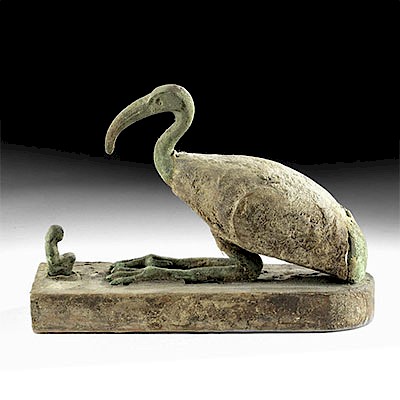Rare / Long Luristan Iron Short Sword
Lot 95
About Seller
Artemis Gallery
686 S Taylor Ave, Ste 106
Louisville, CO 80027
United States
Selling antiquities, ancient and ethnographic art online since 1993, Artemis Gallery specializes in Classical Antiquities (Egyptian, Greek, Roman, Near Eastern), Asian, Pre-Columbian, African / Tribal / Oceanographic art. Our extensive inventory includes pottery, stone, metal, wood, glass and textil...Read more
Estimate:
$3,000 - $4,500
Absentee vs Live bid
Two ways to bid:
- Leave a max absentee bid and the platform will bid on your behalf up to your maximum bid during the live auction.
- Bid live during the auction and your bids will be submitted real-time to the auctioneer.
Bid Increments
| Price | Bid Increment |
|---|---|
| $0 | $25 |
| $300 | $50 |
| $1,000 | $100 |
| $2,000 | $250 |
| $5,000 | $500 |
| $10,000 | $1,000 |
| $20,000 | $2,500 |
| $50,000 | $5,000 |
| $100,000 | $10,000 |
| $200,000 | $20,000 |
About Auction
By Artemis Gallery
Oct 31, 2019
Set Reminder
2019-10-31 10:00:00
2019-10-31 10:00:00
America/New_York
Bidsquare
Bidsquare : Fine Antiquities, Asian, Ethnographic Art
https://www.bidsquare.com/auctions/artemis-gallery/fine-antiquities-asian-ethnographic-art-4581
Our Halloween Day auction features classical antiquities, ancient and ethnographic art from cultures encompassing the globe, plus fine art. Artemis Gallery info@artemisgallery.com
Our Halloween Day auction features classical antiquities, ancient and ethnographic art from cultures encompassing the globe, plus fine art. Artemis Gallery info@artemisgallery.com
- Lot Description
Ancient Near East, northwestern Iran, Luristan, ca. 1100 BCE. A long iron sword with a nearly-flat triangular blade topped with an elaborate handle - a thick guard and flat hilt with what are perhaps abstract ram or ibex forms on either side. Luristan is famous for its bronze work, but its blacksmiths produced some of the oldest-known decorated tools and weaponry in the world. This piece may have been in imitation of the bronze work; hence the incredible handle on this example. This is remarkable because iron is a much less tractable metal to work with compared to bronze, and items like this sword had to be laboriously made from many separate pieces of low-carbon iron. Very few of these iron swords are known to exist. One was found with the lower part of a scabbard; another was inlaid with carnelian. Some of the leather in the scabbards has radiocarbon dates to ca. 1100 BCE, hence the date provided for this sword. Size: 2.8" W x 19.3" H (7.1 cm x 49 cm); 20.5" H (52.1 cm) on included custom stand.
It seems that these pieces were made not to be used in battle, but instead to show status or as votive weapons; there is a strong tradition in the ancient Near East of swords and other weapons being associated with the gods. For example, there is a rock carving dating to ca. 1300 BCE from this region that shows a scene of the gods of the Underworld, including one who is holding a sword similar to this one. Similarly, a golden bowl excavated at Hasanlu shows three swords of similar form to this one that are associated with three deities from the Hittite pantheon.
Provenance: private East Coast, USA collection; ex-William Froelich collection, New York, USA, collected in the 1970s
All items legal to buy/sell under U.S. Statute covering cultural patrimony Code 2600, CHAPTER 14, and are guaranteed to be as described or your money back.
A Certificate of Authenticity will accompany all winning bids.
We ship worldwide and handle all shipping in-house for your convenience.
#146587Slight bending to overall form of blade, with small nicks and abrasions to blade, hilt, and pommel, light pitting holes, with light encrustations, and light softening to some finer details, otherwise intact and excellent. Light earthen deposits as well as fabulous patina throughout.Condition
- Shipping Info
-
All shipping is handled in-house for your convenience. Your invoice from Artemis Gallery will include shipping calculation instructions. If in doubt, please inquire BEFORE bidding for estimated shipping costs for individual items.
-
- Buyer's Premium



 EUR
EUR CAD
CAD AUD
AUD GBP
GBP MXN
MXN HKD
HKD CNY
CNY MYR
MYR SEK
SEK SGD
SGD CHF
CHF THB
THB














